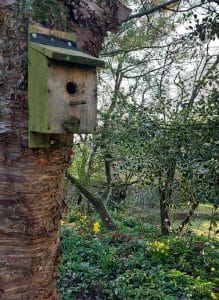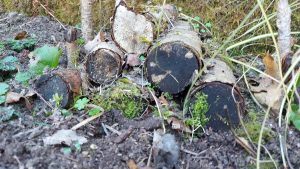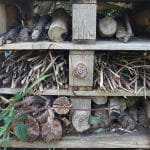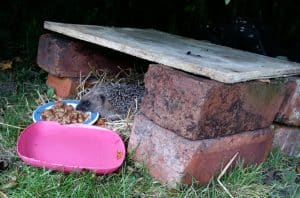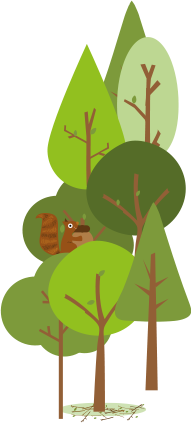

Year of Environmental Actions: Making Homes for Nature
29th March 2022
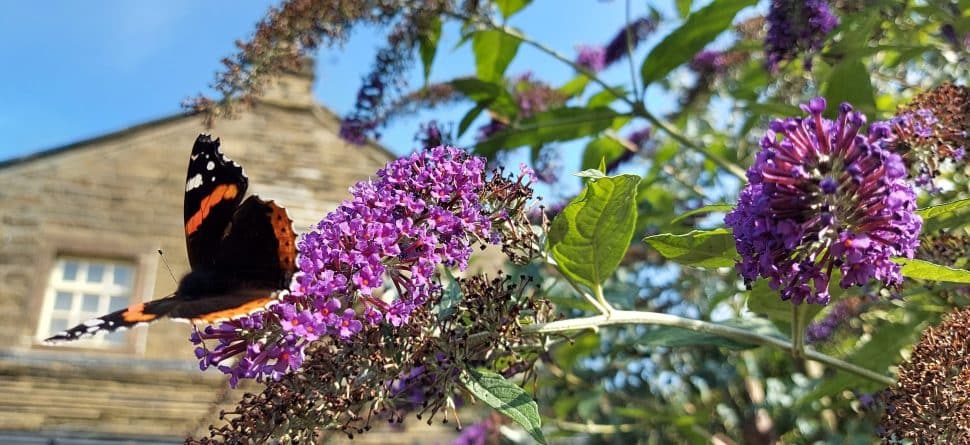
Sitting in the garden on a warm March day, I am watching a blue tit hop in and out of the nestbox that we fixed to a cherry tree; is it making a nest, or bringing food to a female already sitting on some eggs? Is it the same bird that inhabited the box last year, or is it one of the offspring that we saw take its first flight, now returning to raise some chicks of its own? Either way, it feels very special, because the nestbox was constructed by my husband and youngest daughter several years ago and has hosted at least one brood of blue tits every year since. There is something so rewarding that this small intervention is supporting the wildlife in our garden. In the face of urban development, the intensification of farming and climate change, gardens have become important refuges for many species of bird, insect, amphibian and mammal, providing habitats that may be absent elsewhere. Fortunately there are loads of things we can do to help out wildlife in our gardens and public parks.
Nature loves a wild look, but as a gardener the temptation is to create an impression of order. The two concepts need not be at odds. Since overhearing a conversation in a park where a groundskeeper observed that the bird life on site had increased massively since they started stacking the old leaves and deadwood under the hedge instead of burning it, I’ve been pushing any found sticks into the quiet corners of the garden. I’ve even made a presentable-looking dead hedge boundary by laying bundles of sticks on top of each other. The sticks at the bottom decompose over time, nurturing fungi and insect life, which attracts the birds who hop in and out for food – I even found a nest in there last spring. The whole thing seems to be an ecosystem in itself.
In spring, the garden needs clearing to allow space for new seeds and plant growth. I like to leave it as late as possible, because an old gardener once told me ‘everything is home to something’, meaning that the wilting autumn leaves and hollow stems of last year’s plants provide overwintering homes for many beneficial insects such as bees and butterflies. Only when the temperature is consistenly above 10 degrees will I risk clearing away the garden litter to the compost heap, from where any remaining sheltering ladybirds etc can emerge when they are ready. Some of the dead materials are pushed into our ‘habitat hotel’ made from old pallets, where all manner of beasties can find a home in the cracks and cavities
I love to watch the swifts and swallows aerial acrobatics, although there are fewer of these summer visitors year on year as numbers are in steep decline. We have put up a swallow box to encourage them to make a home in the eaves of the house, but sadly none have taken up residence so far, (although we installed it upside down in the first year, which won’t have helped!). We tucked a hedgehog box under the hedge and invited guests with servings of hedgehog food. We did not see the prickly mammals, but when my daughter put out her wildlife camera overnight we found that not one, but two hogs were visiting the garden, able to come and go through a hole in the fence. The most succesful interventions seem to be the ones that cost nothing and where we had to do little, such as the pile of damp logs half submerged in soil by the wall near the pond, where frogs shelter over winter and the area of uncut grass where butterflies lay eggs on the nettles which emerge on sunny days and congregate on the buddlia and other nectar rich plants.
The links in the photo captions take you to sites with good instructions for making your garden more nature-friendly. Making homes for nature in our garden has rewarded us with the pleasure of seeing them when they visit. A garden rich in plantlife, full of bird song and the hum of insects, is not just good for wildlife, its good for the soul too.
By Annie Berrington
Managing Director

